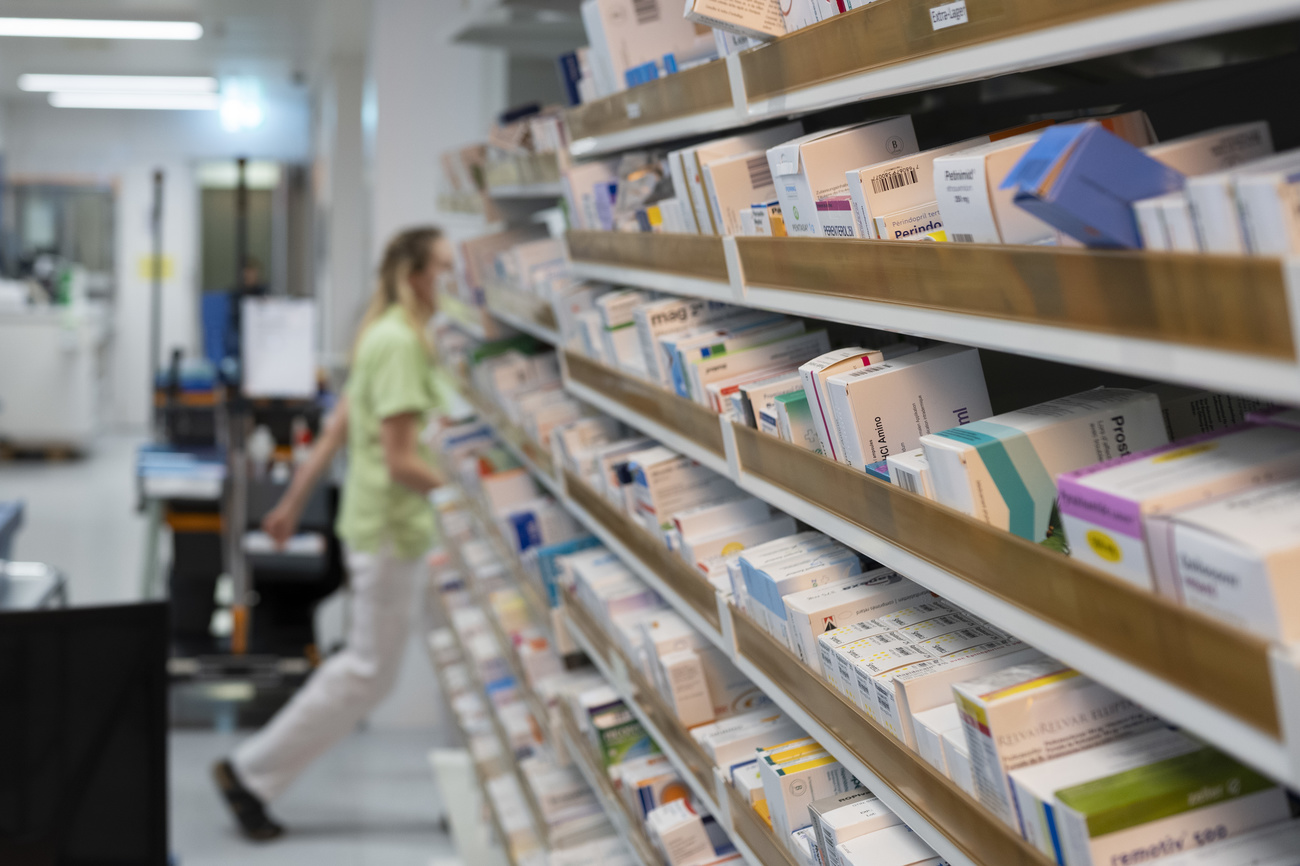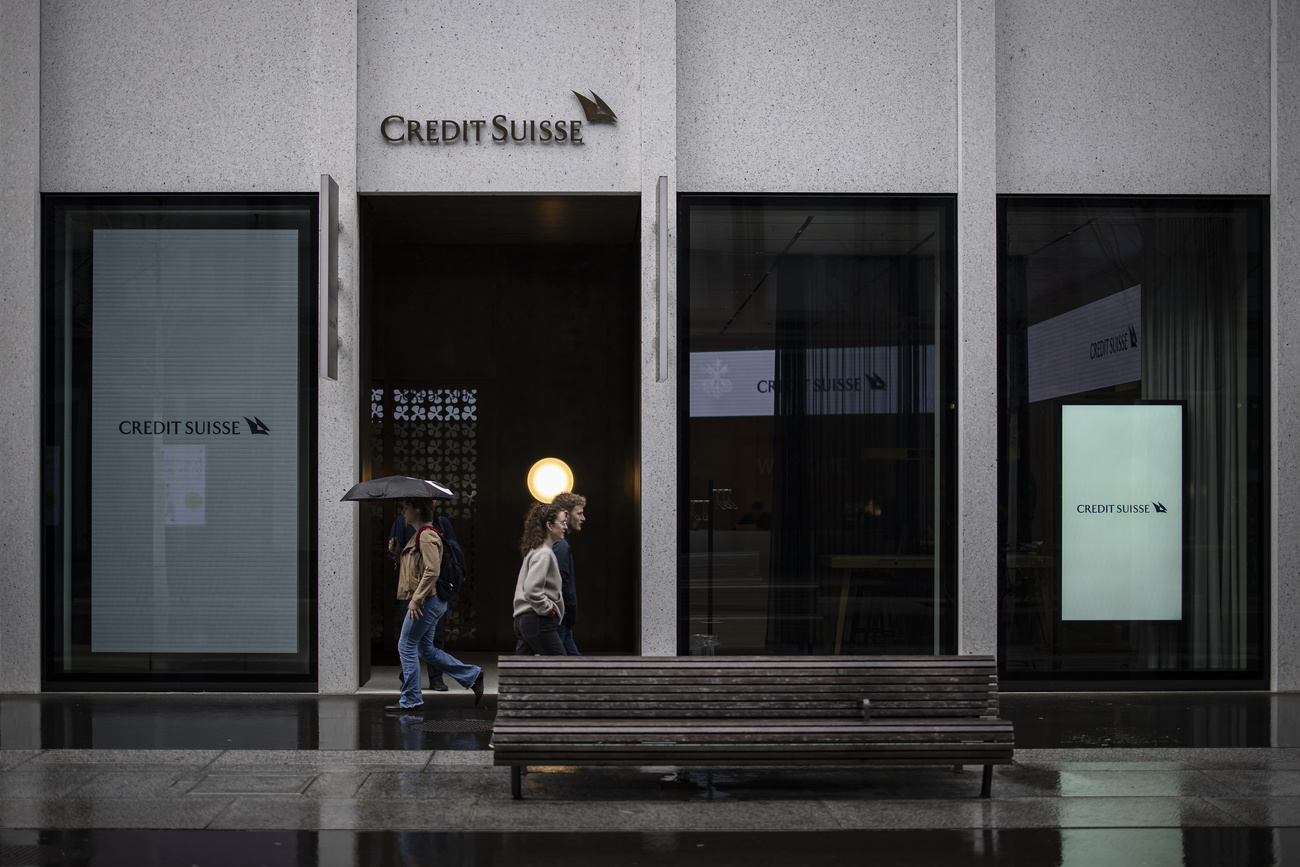How the Swiss economy is faring: the third-quarter check-up

Slower growth, smiling hoteliers and pharma giants entering a new era: these are just some of the main points of the Swiss economy in the third quarter of 2023. Our sector-by-sector review.
1) The Swiss economy bends but doesn’t break
After a strong start to the year, the Swiss economy is now in a phase of stagnation. According to the latest forecastsExternal link from the State Secretariat for Economic Affairs (SECO), gross domestic product (GDP) growth is expected to be 1.3% for 2023 as a whole, compared with 2.1% last year. However, the government is faring better than its neighbours: the International Monetary Fund (IMF) is forecasting growth of 0.7% for the eurozone.
Switzerland is being affected by the poor global economic climate and the difficulties encountered by two of its most important trading partners, Germany and China.
On the inflation front, the news is mixed. While price rises have slowed in recent months, they are set to rise again to 2% in the final quarter of this year, according to forecasts from the Swiss National Bank (SNB). In September, the SNB indicated that it was maintaining its benchmark rate at 1.75%, but did not rule out a further increase to ensure price stability in the medium term.
Like other advanced economies, Switzerland is still facing a labour shortage. At the end of August, the latest figuresExternal link from the Federal Statistical Office showed there were more than 120,000 unfilled vacancies. As a result of the lack of dynamism in the economy and high interest rates, unemployment is expected to rise slowly. SECO expects it to rise to 2% for the year as a whole and forecasts a rise to 2.3% for next year.

More
How the Swiss economy is faring: the second-quarter check-up
2) The Swiss watchmaking industry is weathering the storm without a hitch
Over the first nine months of the year, shipments of Swiss timepieces abroad exceeded CHF19 billion ($21 billion) and were 8.6% higher than in 2022, according to the Federation of the Swiss Watch Industry at the end of October. These results exceeded analysts’ expectations. Bank Vontobel, for example, was forecasting growth of between 1% and 3% this year.
“The return of tourists in markets such as France, Hong Kong and Japan is one of the main reasons for this excellent growth. At the same time, demand for top-of-the-range Swiss watches continues to be strong,” points out Jean-Philippe Bertschy, a watch expert at Bank Vontobel. This growth in purchasing tourism is particularly marked in Hong Kong, where exports have risen by 25.9% since January.
However, after several months of strong growth, exports slowed in September (down 3.8% year-on-year). Bertschy also expects a degree of normalisation between now and the end of the year, particularly in the United States, the leading market for “Swiss Made” watches, where the post-Covid watchmaking hype should gradually subside.
While luxury watches continue to drive the market upwards, the entry-level segment is not left out. This is due in particular to the Moonswatch, an affordable (CHF250) version of Omega’s Speedmaster Moonwatch, marketed for nearly two years by Swatch, which is expected to sell nearly two million units this year.

More
Swiss watch industry sees India as next growth market
3) Swiss tourism has regained its vitality
Despite the strength of the Swiss franc, global conflicts and the prevailing economic gloom, the tourism sector is expected to set a new record in 2023. At the end of October the research institute BAK Economics forecast that the annual number of overnight stays would exceed 40 million for the first time.
This summer, the Swiss hotel industry recorded 23.5 million overnight stays, a positive trend driven by American tourists, who were even more numerous than before the pandemic (20% more than in 2019). European guests, meanwhile, remained loyal to Switzerland, particularly those from the UK. “The foreign guests who failed to turn up again this summer were mainly Chinese, Indian, Japanese and Gulf tourists,” says Véronique Kanel, spokesperson for Switzerland Tourism.
The volume of overnight stays by Chinese tourists is not expected to return to pre-pandemic levels before the end of 2024 or 2025. “In this market we are targeting only individuals or small groups, who want to stay in Switzerland longer than before and visit destinations that are not necessarily tourist hotspots,” Kanel said.
For the winter season BAK Economics is expecting a very modest increase in overnight stays (0.4% to 17.5 million). After several years of strong demand, domestic customers are expected to fall by 2.2%, a decline that should be offset by foreign tourists. The economists are expecting an increase in the number of guests from European countries (2.2%) and distant markets (5.4%).

More
‘High costs are not prohibitive for premium destination Switzerland’
4) Swiss pharma giants mark new era
Basel-based pharmaceutical company Novartis marked a major milestone in the third quarter with the spin-off of its generics division Sandoz on October 4. “This is a truly historic moment for Novartis and Sandoz, as we begin new chapters as independent companies,” said Novartis CEO Vas Narasimhan. The spin-off is the next step in a major restructuring at the pharma giant to focus on so-called innovative medicine that could dramatically improve health outcomes and offer big payouts for the company.
This spin-off injected optimism into the company, which raised its earnings forecast for a third consecutive time. Third-quarter group sales rose 12% to $11.78 billion (CHF10.6 billion), slightly above analyst forecasts.
Sandoz becomes an independent company at a time of extreme pressure on generic makers to lower prices while fending off competition from Asia. After a muted debut on the SIX Swiss stock exchange, Sandoz announced positive sales growth. It also said it planned to launch several biosimilars over the next five years to help profit prospects.
Cross-town rival Roche is also in transition as several blockbuster drugs near patent expiration. Sales were up 7% in the third quarter but its share price didn’t respond as positively. The company expects this to change when the bumper sales of Covid diagnostics disappear from the balance sheet and investors see its real growth potential. In October the Basel-based firm announced a major $7.1 billion acquisition that the company hopes will boost its outlook.

More
New European pharmaceutical rules met with scepticism in Switzerland
5) Uncertainty reigns for the commodity trading sector
Swiss traders are coming off several months of record profits on the back of high commodity prices in the wake of the war in Ukraine. Glencore’s adjusted core earnings fell to $9.39 billion in the first half of the year, from $18.92 billion at the same time last year amid weak demand from China and lacklustre economic growth.
The outbreak of war in the Middle East is creating new uncertainty. If the war expands in the region, analysts predict oil prices could surge again.
Swiss traders face other questions amid EU discussions on further sanctions against Russia. The Federal Statistical Office reported that trade of raw materials through Switzerland has fallen this year. This backs up reports that some traders are retreating to markets less affected by sanctions such as the United Arab Emirates.

More
Fully traceable gold – technically feasible or pure fantasy?
6) UBS/Credit Suisse merger continues to dominate banking sector
UBS’s ongoing absorption of the former Credit Suisse bank remains the dominant theme in the Swiss financial sector. Having shed 13,000 full-time positions so far this year, UBS says it is on course to achieve $10 billion in cost savings by 2026.
The dust has settled since the emergency takeover in March, but several question marks still hang over the Swiss banking sector. One burning issue currently occupying the minds of bankers, politicians and regulators is how to avoid a similarly disastrous bank run in future.
Reuters reports that measures are being considered to slow down the rate at which large sums of money can be withdrawn from banks – by imposing fees on large flash withdrawals or by offering higher interest rates for long-term savings.
Another outstanding issue is the raft of ongoing legal complaints relating to Credit Suisse AT1 bonds being written-off during the forced takeover. The courts may be dealing with this matter for months, if not years, to come. But UBS has at least eased fears that the market for this type of risky bond may have been irreparably crippled by the controversial write-off in March.
Investor demand for UBS’s newly issued AT1 bonds, worth $3.5 billion, far surpassed expectations. This is good news for all Swiss banks, which depend on AT1s to help maintain healthy capital ratios.

More
Credit Suisse AT1 bond ‘rip-off’ could cost Swiss taxpayer
Edited by Virginie Mangin

In compliance with the JTI standards
More: SWI swissinfo.ch certified by the Journalism Trust Initiative









You can find an overview of ongoing debates with our journalists here . Please join us!
If you want to start a conversation about a topic raised in this article or want to report factual errors, email us at english@swissinfo.ch.